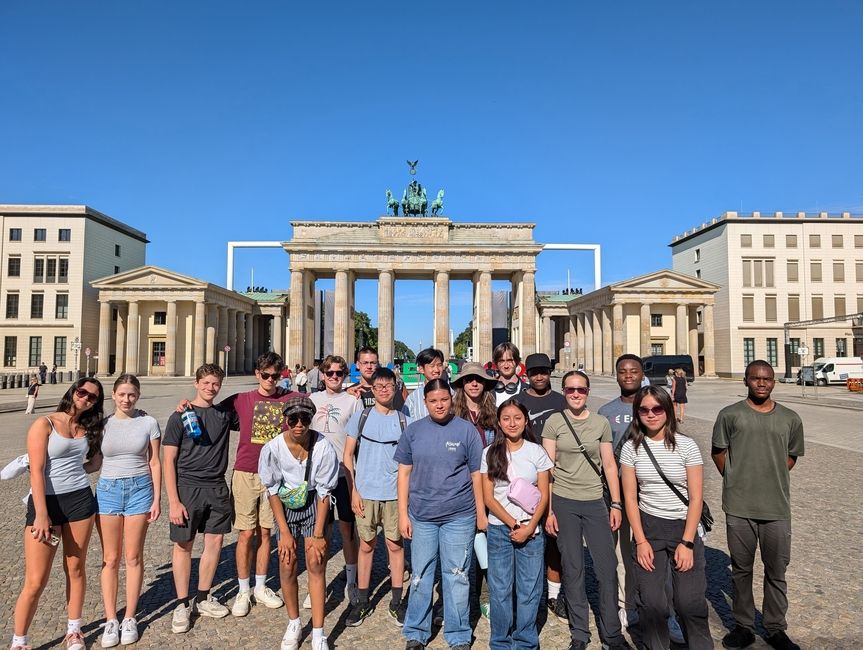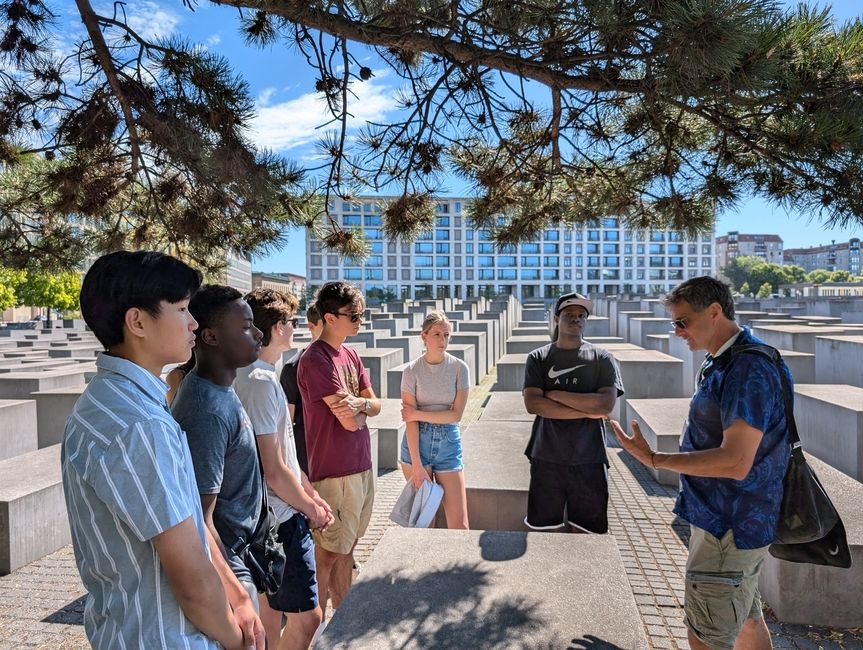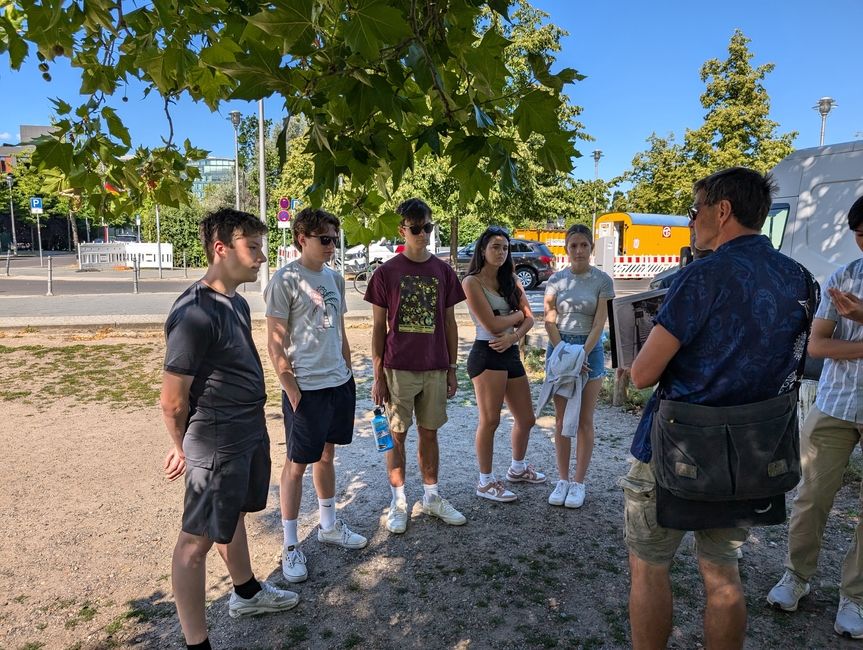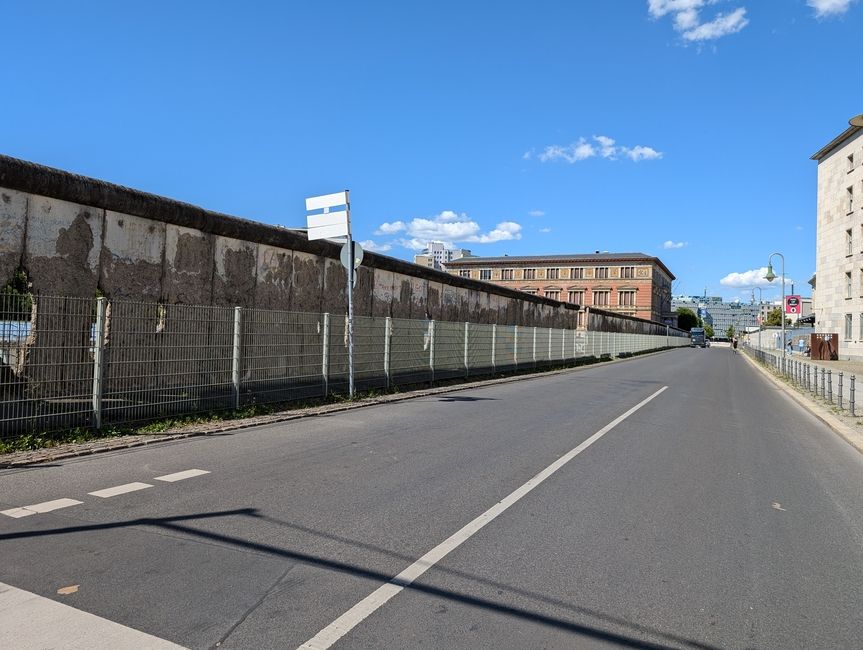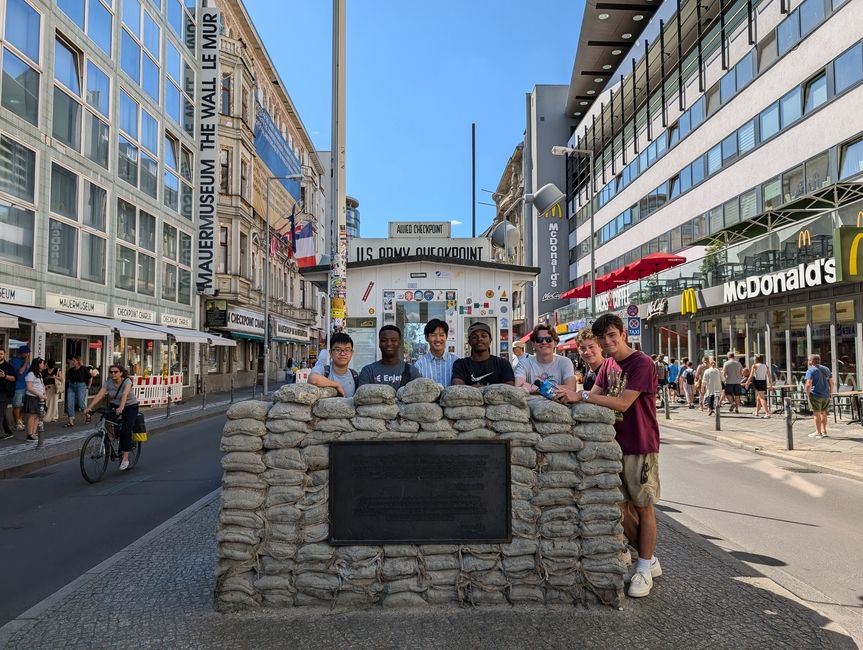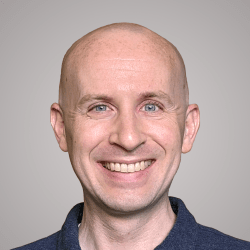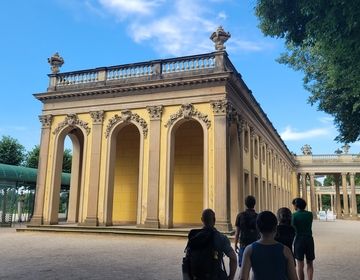Tour through Berlin
Today, the engineering students began their first full day in the city with a walking tour of the historic city center. We began with a triumphant start at the Brandenburg Gate, which was the city gate built in the late 1700s at the start of the processional street, Unter den Linden, leading towards the City Palace. Our tour guide recounted the beginnings of history of the modern German empire, and pointed out some traces of history left on the building – patches that remain from the incredible destruction of the city during World War II. Encircling Pariser Platz are a handful of embassies and hotels, creating a stark contrast between old and new, a theme that is visible throughout the city.
We continued on to see the Reichstag, Germany’s house of parliament. Only steps from the Brandenburg Gate, reminders of the many phases of history were visible, as we crossed over bricks in the road marking the site of the former Berlin Wall, which so infamously split the city into two. Upon seeing the Reichstag, we learned about the history of this building, beginning in imperial times, but playing host to the fire that gave the Nazi party the pretense to take over control of the government and become the authoritarian regime we are all familiar with. Today, Germany continues to use this building as its seat of elected government, but now it is topped with a glass dome designed by Norman Foster.
A few blocks south, we then entered the Memorial to the Murdered Jews of Europe, a massive memorial in the heart of the city. A multi-acre site with an undulating landscape filled with over 2,500 rectangular concrete pillars, this site is quite abstract yet can evoke many different interpretations. It allows for reflection on the darkest period of German history, allowing the viewer to experience it through their own impactful journey.
Mere steps from the memorial is an unassuming parking lot, which sits upon the former site of the Reich Chancellory complex, and at the site where Hitler’s bunker was located. Although the bunker was attempted to be destroyed after the war, the sheer amount of concrete meant that this was not possible, and the remains still exist under this parking lot, although no longer visible to anyone.
We then continued on by the building that used to house the Air Ministry. Built during Nazi times leading up to the 1936 Summer Olympics, the architecture is extremely representative of what one would expect from this time: imposing, stark, and at a very large scale. When it was completed, it was the largest office building in Europe.
After walking by a strip of the Berlin Wall that remains on the former site of the headquarters of the SS, we continued on to our final destination, Checkpoint Charlie. This military checkpoint during the time of the Cold War was used as the entry/exit point between east and west. In the city divided yet encircled by East Germany, West Berlin was like a capitalist island in the heart of socialism. The Berlin Wall, built to keep the East German citizens from defecting to the west, ran through this point, and this checkpoint was one of only a handful of locations where it was possible to go through the otherwise impenetrable border – but only with proper documentation and permission, of course.
Today’s journey allowed us to relive many phases of German history of the past few hundred years, stepping foot in the places that shaped many aspects of modern life. It is really amazing to be able to be present in a city that has had so much to do in world history and politics, and is still making its mark on modern society. Over the next three weeks, the students will get to experience many more aspects of Berlin that are helping to shape the world of engineering, and allow it to remain one of Europe’s most important cities!
Related Posts
A Day in Potsdam
We arrived in Potsdam on Saturday morning and were welcomed by the familiar charm we've seen from Berlin: abundant public transit, impressive architecture, and a friendly calm from all its... keep reading
Berliner Dom
Recently, a group of our engineering students had the pleasure of visiting the magnificent Berliner Dom (Berlin Cathedral). Standing proudly on Museum Island, the Berliner Dom is instantly recognizable by... keep reading
Erfurt, Germany
Saturday marked the start of our weekend trip to Erfurt by ICE train. As we exited the Bahnhof, students immediately noticed the medieval architecture and noted the differences between Berlin... keep reading
